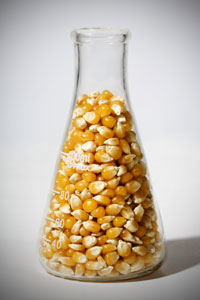Scientist: sample sizes in GMO risk assessment are inadequate
By Ken Roseboro
Published: June 1, 2012
Category: GMO Food Environmental Risks

To access all the articles in this month's issue of The Organic & Non-GMO Report, SUBSCRIBE NOW.
Sample sizes used in environmental risk assessment of genetically modified crops are too small to assess risks to “non-target” insects such as honeybees, according to a scientist who has published papers that analyze GMO risk assessment studies.
Michelle Marvier, department chair of the department of environmental studies and sciences, Santa Clara University has published papers on the risks of Bt GM crops to non-target insects and invertebrates such as honeybees and earthworms. She also has published a “meta-analysis” that looked at other studies on the effects of Bt corn and cotton on non-target insects.
The good news, Marvier says, is that Bt crops haven’t caused much harm to non-target insects, according to her research and papers published by other scientists. “Bt is relatively benign compared to pesticides, which is good because these crops cover a lot of acreage,” she says.
The bad news is that a lot of the studies she has analyzed used sample sizes that were too small to assess the risk of Bt crops to non-target insects. “The studies don’t have statistical power to determine if there is a problem. It’s similar to a drug trial where you are looking for side effects but there are only a few subjects. It’s a weak study design,” Marvier says.
Bigger sample sizes, she says, would lead to more believable results. “An industry sponsored study would be doubted if there were small sample sizes. If they used bigger sample sizes, the study would be more believable,” she says.
Marvier gives an example of a lab study looking at the effects of Bt cotton leaves on earthworms. The study may use just four batches of 10 worms per batch. Two batches are fed GM cotton leaves and the other two are fed non-GM cotton leaves.
“It’s not atypical to have that few samples in an experiment,” she says. “The conclusion that there is not a problem is not believable, but if scientists used 20 batches, which would not cost much more, it would be more believable.”
Marvier says larger sample sizes will be especially critical to assess risks of new GM crops that are introduced. “They will need to use large enough sample sizes to detect any problems.”
© Copyright The Organic & Non-GMO Report, June 2012




